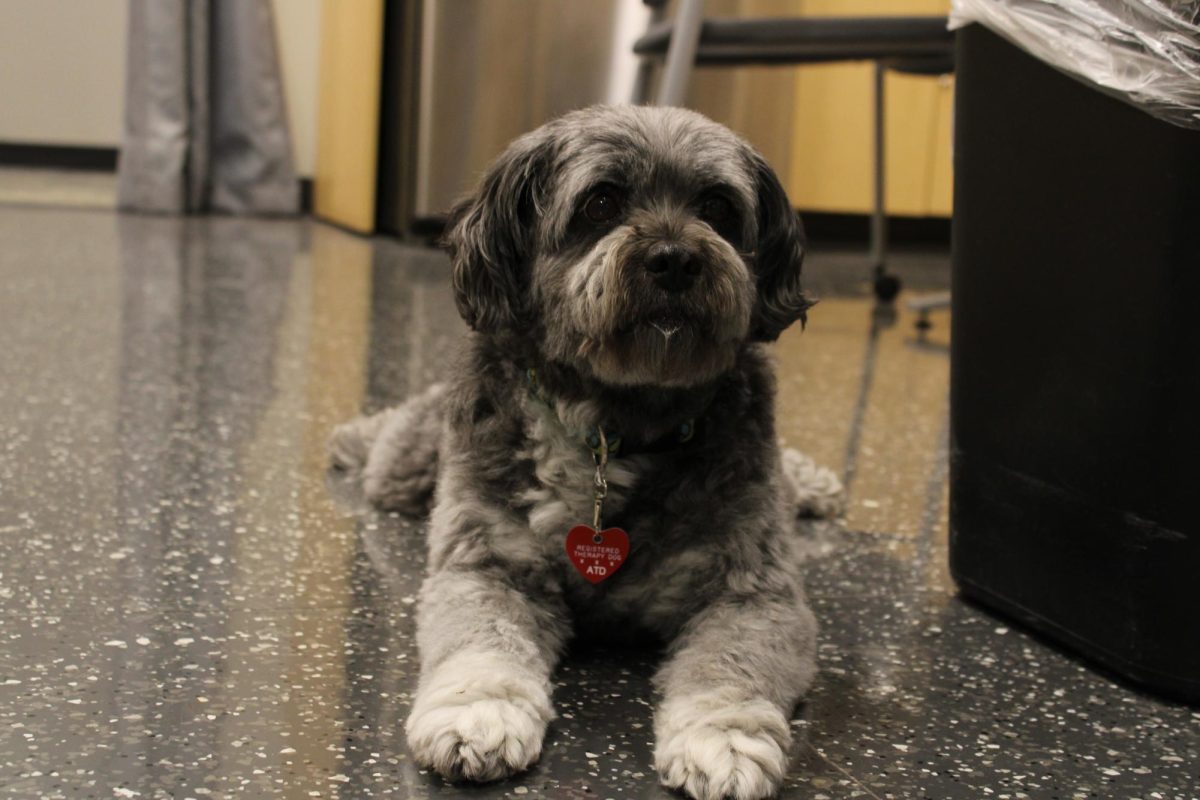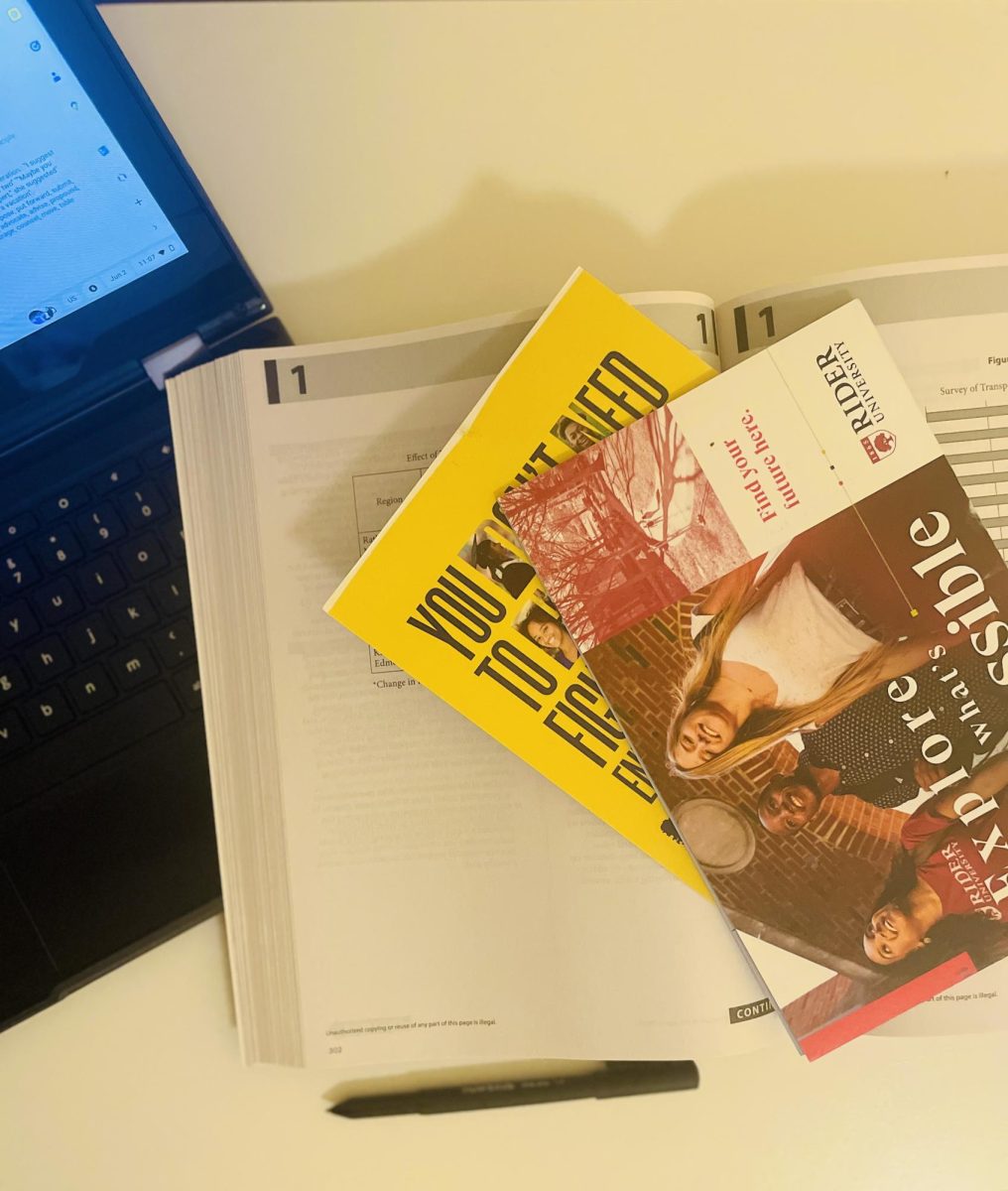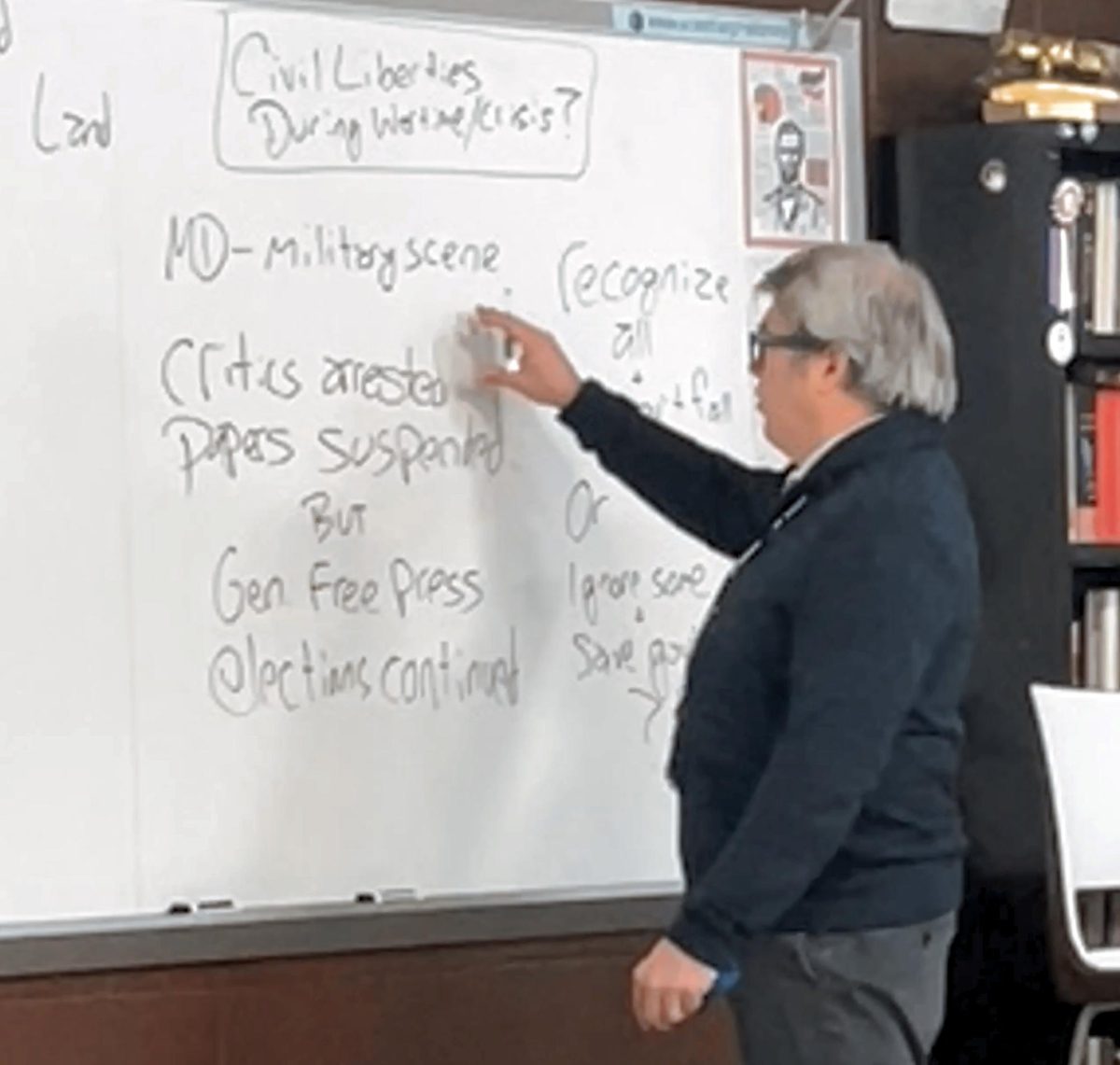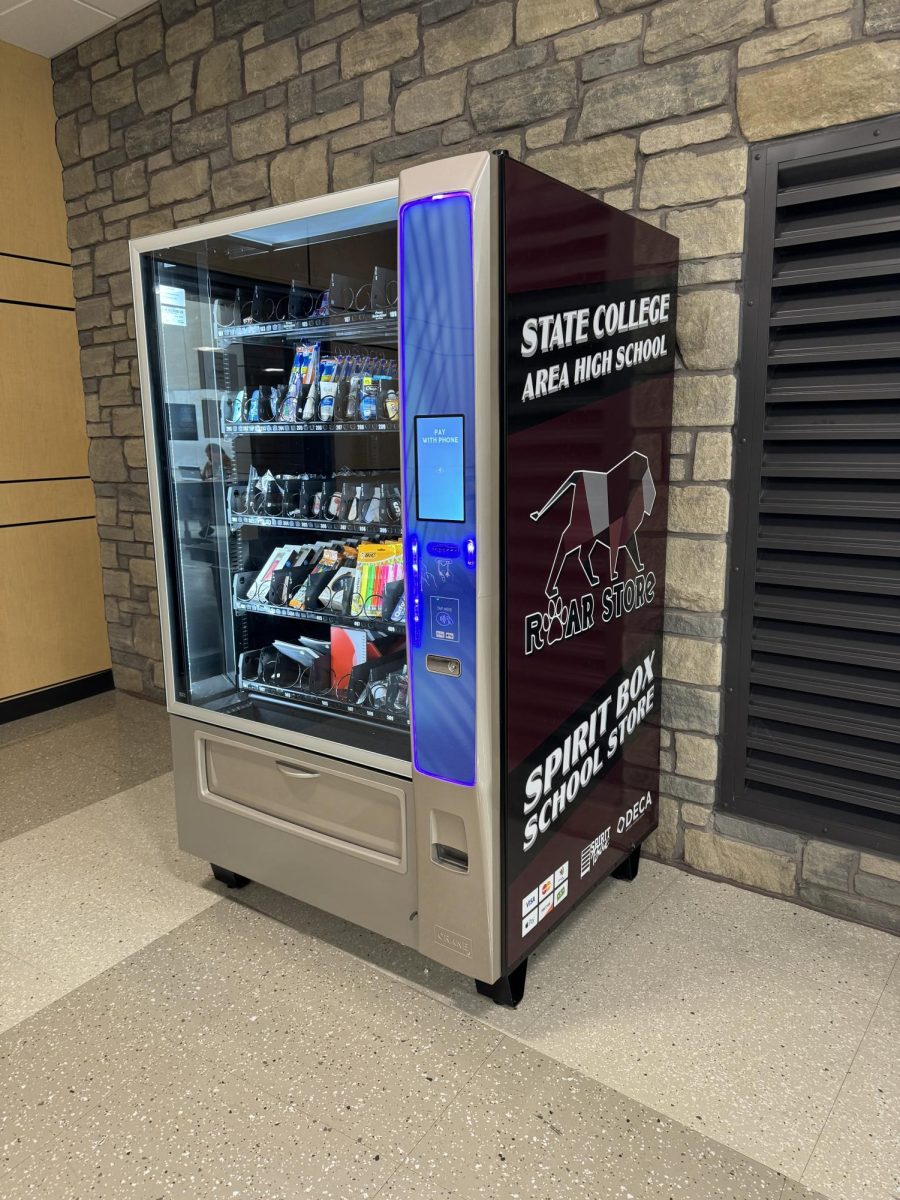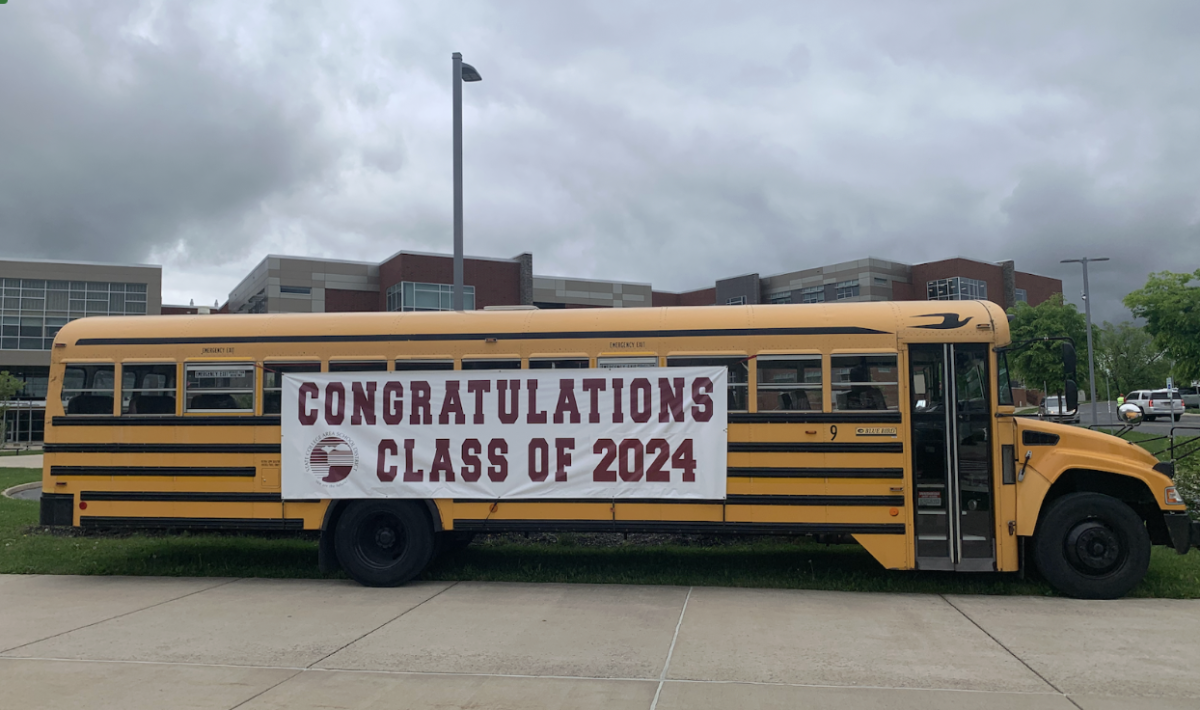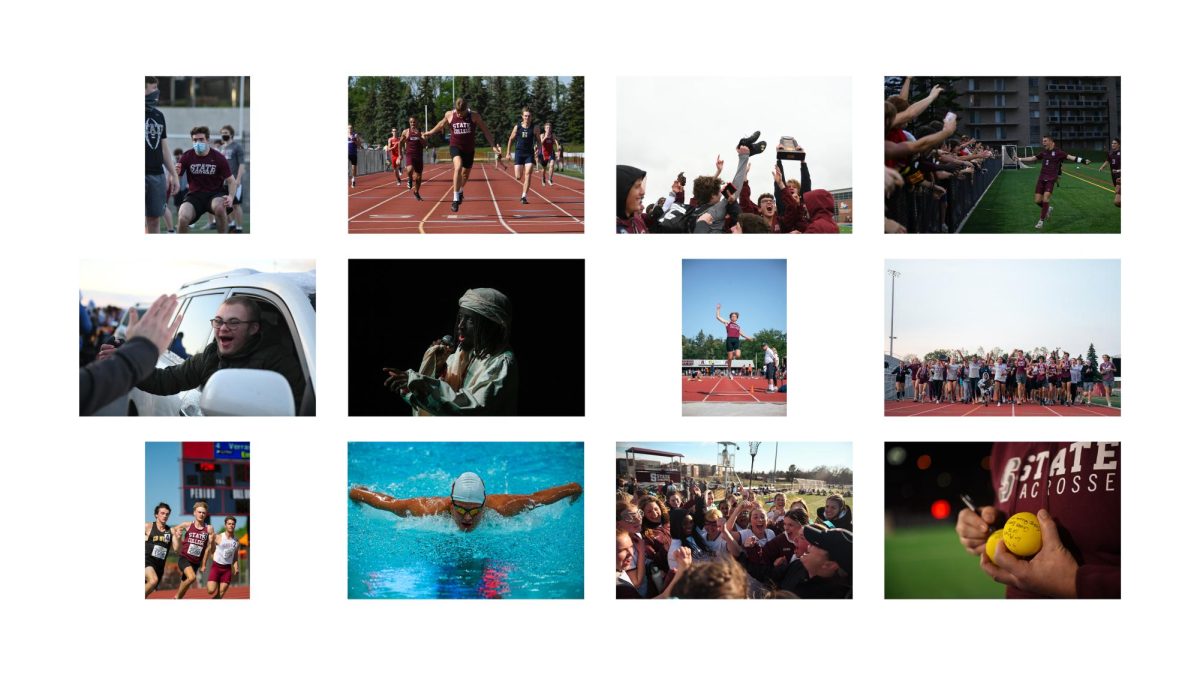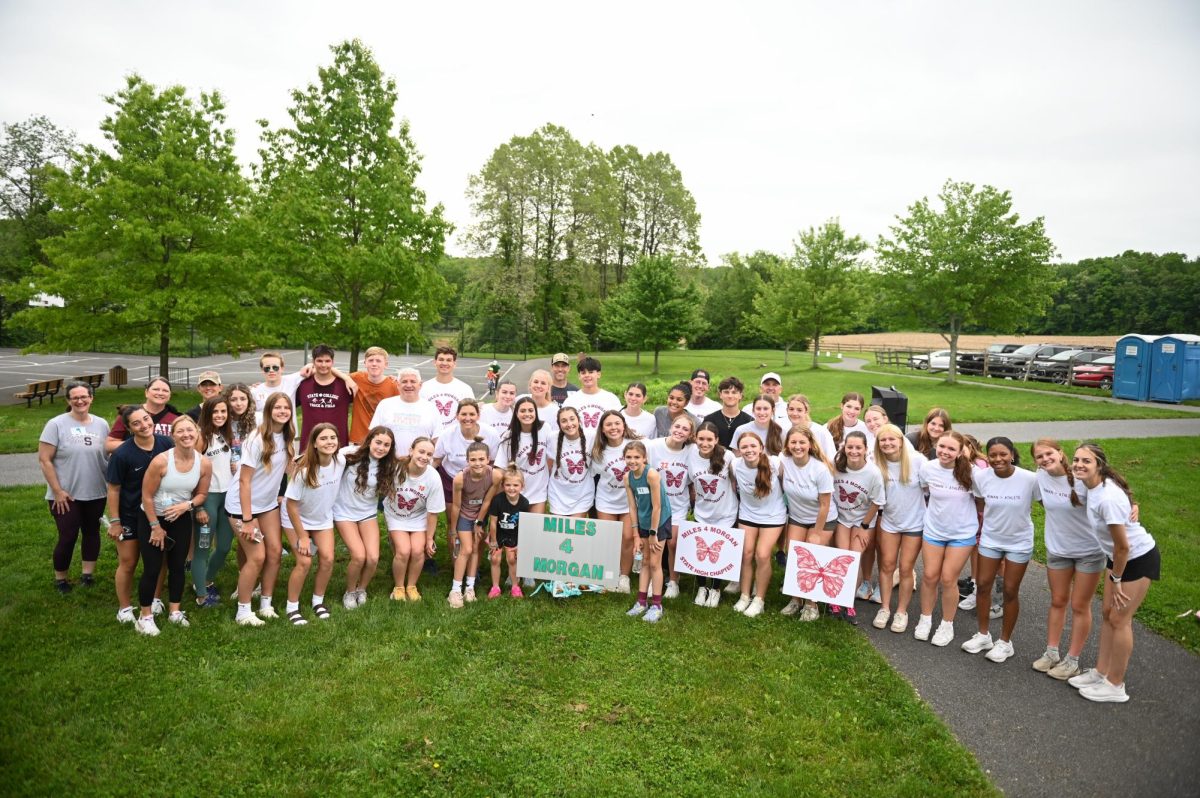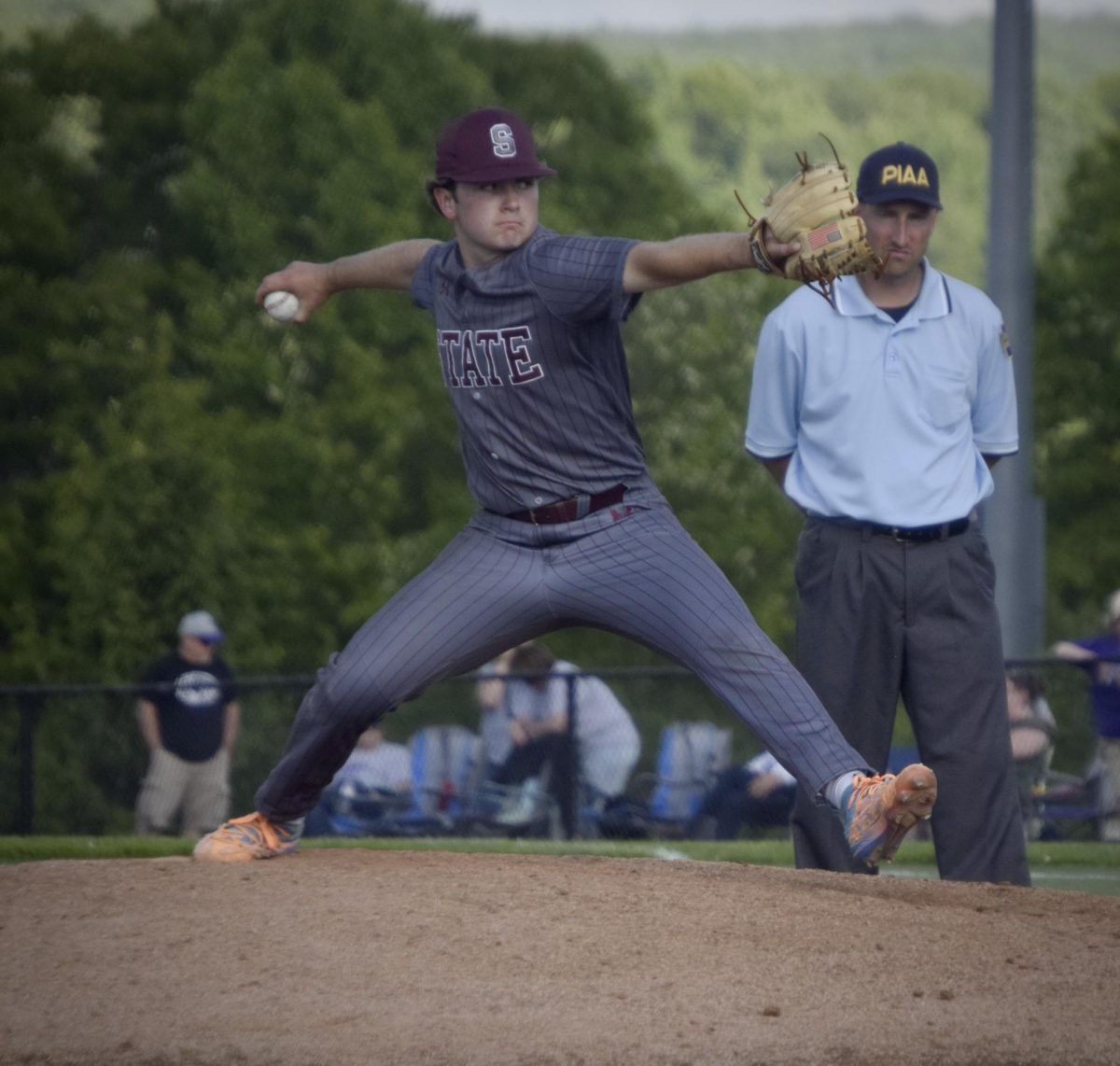On Tuesday, Feb. 6, the State High Master Singers will be holding their annual Maroon and Gray concert. Unlike any other choir concerts, the group will be split into two choirs: a Maroon choir and a Gray Choir. These choirs are conducted by student conductors. This year’s student conductors are Abby Putnam and Prithvi Narayanan.
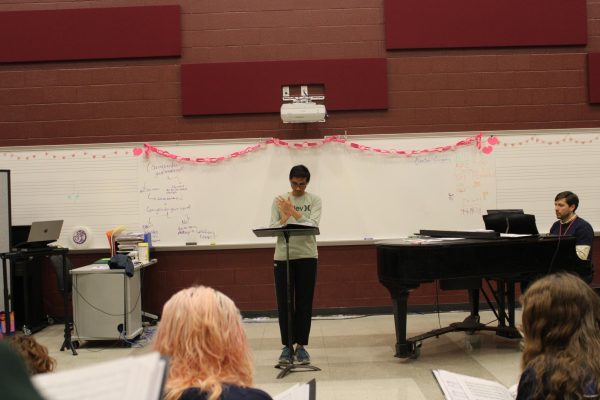
The Maroon and Gray concert is unique to the Master Singers due the distinctive tradition of student conductors. Erik Clayton, current choir director at State High explained the history behind the unlikely tradition.
“The Maroon and Gray Concert was started by Bob Drafall, who was my choir director at State High. In 1999, I think, was the first concert. It was a really amazing experience, because the students don’t get an opportunity to really prepare a group for a concert,” Clayton said. “Sometimes the students will get a chance to conduct the ensemble, because the director’s gone [during] regular rehearsal, or maybe it’s the end of the year, but to actually be given enough rehearsal time to choose your repertoire, prepare it and present it in a performance. That alone is really unique and wonderful, but it’s also a conducting masterclass.”
Not only is the Maroon and Gray Concert a special opportunity for students to be on the other side of the choir, it also provides them the chance to receive feedback from college professors.
“We bring in two collegiate conductors in the choral field. This year’s adjudicators will be Dr. Kiver from Penn State and Dr. Voorhees from Susquehanna University,” Clayton said. “They will each provide comments and feedback, written comments and feedback, to the conductors to help with their growth. They’ll also have a 10 minute time to work with the conductors. So it’s very much like for students that have gone on adjudication trips to Hershey or to Washington, D. C. The way that the adjudicators would work with the ensemble, they’re actually working with the conductor, which is really fantastic.”
Both conductors this year are dedicated to music and music-making. Abby Putnam is the conductor of the Gray choir this year. Outside of the choir program, she’s involved in many of the other music opportunities State High offers.
“I’m involved in a lot of different music things,” Putnam said. “I was a drum major this past marching band season. I’m choir president, so [I’m] in charge of the choir officers. And I’m also involved in a symphonic band, as well as being BoomWhackers president. So [I’m] involved in a lot of different music ensembles.”
Prithvi Narayanan has enjoyed music from a young age.
“I’m really into the arts and music and really understanding, because I feel like music is one of those rare things that brings people together. Regardless of cultural background or language or other traits, that’s [music] something that we can share. I enjoy doing Indian classical music and Western choral. In addition to that, I love doing figure skating as well. So I’ve been doing that since I was little. It’s like the good balance of the sports world and then the arts world as well,” Narayanan said.
Not only has Narayanan been a part of the music community from a young age, he has also been able to find the intersections between music and things in his everyday life.
“[Music is helpful in figure skating] because when we’re doing programs, you have to really match your steps with the music and have a grasp of the meter. Like if we’re doing something that is in four counts, then matching that, matching those figure skating steps with that, and then three counts and matching it with that,” Narayanan added. “So there’s a lot of intersectionality, which is something people might not expect, and that’s the cool thing about music, you can always find connections in everything.”
Both Putnam and Narayanan wanted to audition to be a conductor to learn more about being on the other side, and the different skills it involves. “I’m really interested in music education; that’s what I’m planning on majoring in in college. So I was really excited to get the opportunity to do that in high school,” Putnam said. “It’s kind of rare to get the opportunity to conduct within the high school. I guess there’s a drum major. These Maroon and Gray conductors are kind of the only opportunity to have conducting experience.”
It’s kind of rare to get the opportunity to conduct within the high school. […] These Maroon and Gray conductors are kind of the only opportunity to have conducting experience.
— Abby Putnam
Narayanan, on the other hand, knew he wanted to audition for the conductor position because it could expand on his current skills.
“I’ve always wanted to do this, since I learned about it. It’s something that I felt would push the boundaries for me and expose me to a new dimensionality in music and in western choral singing,” Narayanan said. “I was always intrigued by conducting in general and how simple gestural movements of the hands somehow managed to get such beautiful harmonies and musical intonation and musicality. […] Maroon and Gray is one of those rare opportunities that students get the chance to conduct, and that’s very rare. So I wanted to embrace this tradition and try to make my mark as well.”
The audition process is also unique to the program. Instead of the teacher choosing the conductors, the students in the choir get to rank who they want to be their conductor.
“Everyone’s given a chance by the Master Singers to practice conducting gestures and learn the song. And everyone has an opportunity to at least practice what it’s like to conduct a phrase or two,” Clayton said. “Then everybody interested gets an opportunity to audition and they get a five minute time slot. The singers, the ensemble, chooses their two conductors through a ranking system.”
Outside of auditioning, the student conductors have the opportunity to pick their own repertoire, and practice their pieces and conduct in class before the big day.
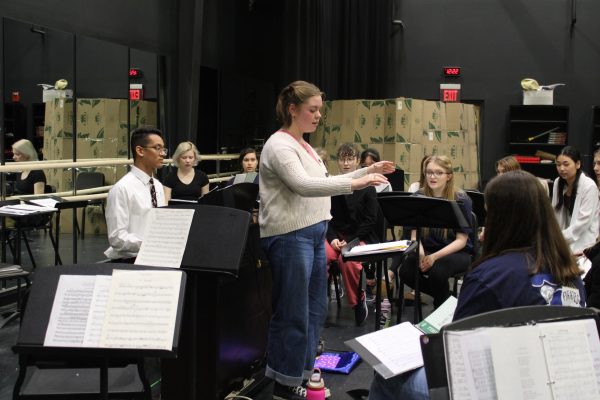
“I’m really excited because we get the opportunity to pick our own music, and there’s two selections that I’ve chosen: ‘Among the Leaves So Green’ [by Andrew David Perkins] and then also, ‘Earth Song’, composed by Frank Ticheli,” Putnam said. “Both of these are songs that we’ve [Master Singers] not gotten the chance to sing in our music library, but I think that they’re really cool, and I’ve been kind of keeping my eye on them, so I’m happy that I got to sing them, or conduct them while my choir sings them.”
Narayanan chose songs that would reflect who he was.
“‘Balleilakka’ is composed by one of the greatest Tamil lyricists, A. R. Rahman. It was adapted by Ethan Sperry into a choral arrangement. The thing that I really appreciate about this song is [that] it’s in my first tongue; it’s in Tamil. And the other thing is, when I was in elementary school, I remember those times when I didn’t necessarily feel welcome. I was made fun of for singing Indian classical music in my first tongue. So the fact that I get to do this in a school setting, it feels like a full circle in righting the wrong, if you will, and really showing the diversity in music and how there’s so much, even in this, a lot of students said, I see so many similarities in this difference, and it’s in, it’s when we have great differences that we find the similarity, and so that’s the reason why I picked this,” Narayanan said.
Narayanan continued by describing the second he chose. “[The] second one is ‘Oh Schöne Nacht’. The music is by Johannes Brahms, one of the most prolific German composers of the 19th century,” Narayanan continued. “During my high school career, I’ve always appreciated the German appetite for Kunst, for the arts, and for sharing the art with the world. […] ‘Oh, Schöne Nacht’, it harkens back to the classical setting […]. It has those harmonies that just shine. This would be one of those pieces that they would sing in a German cathedral, and you would just hear the reverberations just echoing and echoing and echoing, and there’s a kind of gravitas and depth to it, which is a beautiful contrast to ‘Balleilakka’.”
Finally, Narayanan is using the piece he auditioned with to wrap up his program. “The final piece is the one I auditioned on, which is ‘Hear My Prayer’. The words and music written by Moses Hogan, awesome intellect in the African American musical tradition and canon. […] It’s essentially a celebration of his [Jester Hairston’s] life, and stating that the meaning of life is beyond life in and of itself. There’s always a guiding force in what we do and how we do and, and that our choices are always intentional with a purpose,” Narayanan said.
Narayanan dove deeper into the meaning of music and the intention of the pieces he chose.
“The whole intention of this program is to show what music can be. That music is just not a monolith, that it isn’t. You can’t define it in any one way in particular, because in my firmest belief, music is simply what brings us together […], ” Narayanan exclaimed. “Music can be the beats you hear, or the vibrations you feel, or the words you speak. […] That’s the power of music”
“Music can be the beats you hear, or the vibrations you feel, or the words you speak. That’s the power of music.
— Prithvi Narayanan
Since the music chosen is so diverse, a lot of preparation is allotted for the concert. Since the choir is split, ensuring both groups have enough help from Mr. Clayton has to be done in a unique way.
“[The] Master Singers get split in half — two even balanced groups,” Clayton said. “The two conductors, I’ll alternate [between them]. Being in the room with them, helping facilitate rehearsal, giving them feedback, guiding them in the rehearsal process a little bit, and then I’ll be away and they have to do it all on their own.”
Practicing doesn’t just occur during the choir rehearsal block.
“We will have lunch together, the conductors, after the rehearsal period, because Master Singers happens right before lunch,” Clayton added. “They’ll go get lunch, come back, and then we can talk through, and kind of do a debrief on what’s working, what’s not working, what are you noticing, what’s the challenge, what’s the success.”
With concert time drawing closer, Putnam suggests that everyone attend the concert, especially the people who are interested in how conducting and music works.
“It’s a lesser attended concert, so we really highly recommend different people [attend]. I think everyone should attend this concert. It would be interesting for people who might not know that much about music, and might be interested in kind of seeing what conducting is all about, if they have any intrigue about that,” Putnam said. “I feel like it breaks down conducting a little bit and you can see how different motions with your hands and like different beat patterns and just different conducting jargon.”
The Maroon and Gray Concert is a rare opportunity for students to learn and receive feedback on their conducting. Not only is it a great opportunity to get a glimpse into music education, it also allows the conductors to choose a repertoire that has a meaning and expresses who they are.
The concert will be held on Feb. 6 in the Performing Arts Center at 7:30 p.m. For more updates, follow the State High Choir Instagram @statehighchoirs.



